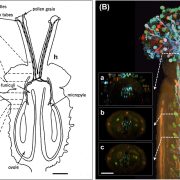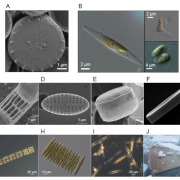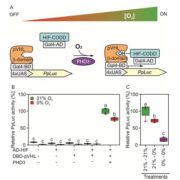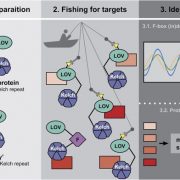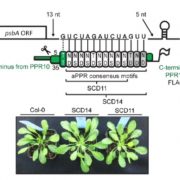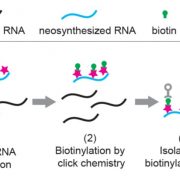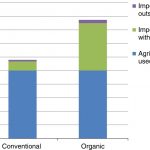Gene-editing in somatic cells can be achieved by spray-on of carbon dots (bioRxiv)
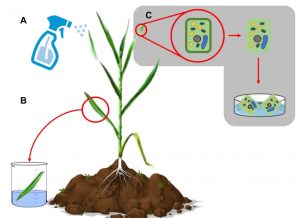 It’s known to all that plant biotechnology can enhance food security, but there are also inevitable disadvantages of these new approaches. At present, introducing DNA into a plant genome is slow and expensive. Recently, Doyle et al. developed a new method which claims to be simple, inexpensive, fast, and versatile in plant species. They mixed carbon nanodots with PEG so that plasmid DNA electrostatically interacts with them. Plants take up these nano-particles delivered via foliar spray. The authors have used this spay-on method to transiently express GFP in the nucleus. Expression of the CRISPR-Cas9 system in somatic cells led to “spray-on gene editing”. The authors demonstrate successful application of this method in wheat, which will be useful for plant developmental and agricultural research. (Summarized by Nanxun Qin) bioRxiv 10.1101/805036
It’s known to all that plant biotechnology can enhance food security, but there are also inevitable disadvantages of these new approaches. At present, introducing DNA into a plant genome is slow and expensive. Recently, Doyle et al. developed a new method which claims to be simple, inexpensive, fast, and versatile in plant species. They mixed carbon nanodots with PEG so that plasmid DNA electrostatically interacts with them. Plants take up these nano-particles delivered via foliar spray. The authors have used this spay-on method to transiently express GFP in the nucleus. Expression of the CRISPR-Cas9 system in somatic cells led to “spray-on gene editing”. The authors demonstrate successful application of this method in wheat, which will be useful for plant developmental and agricultural research. (Summarized by Nanxun Qin) bioRxiv 10.1101/805036


